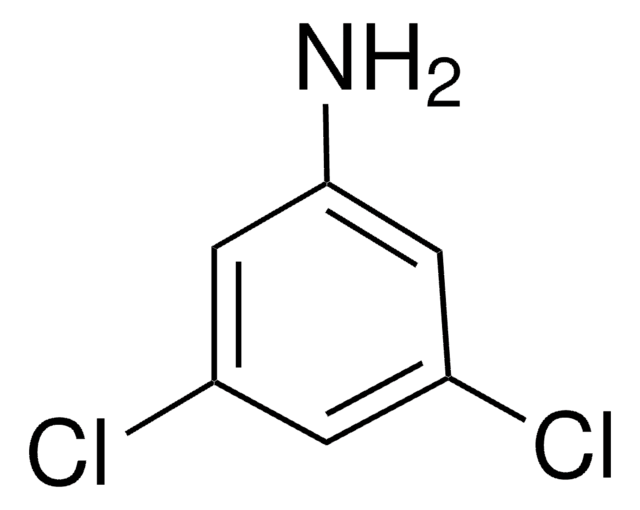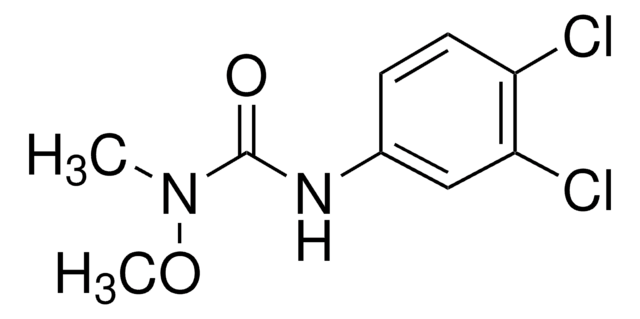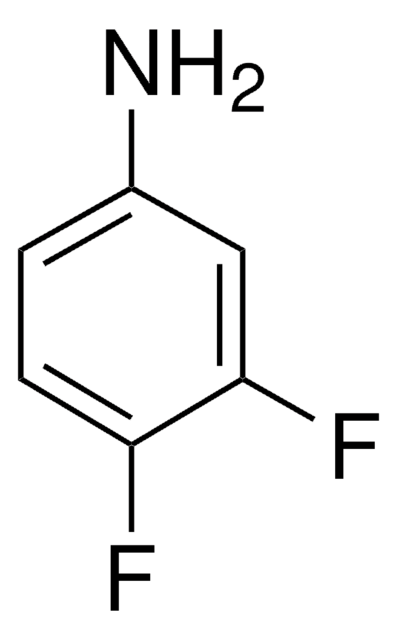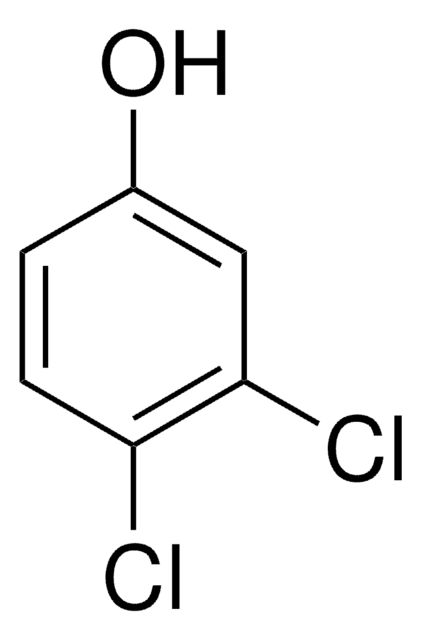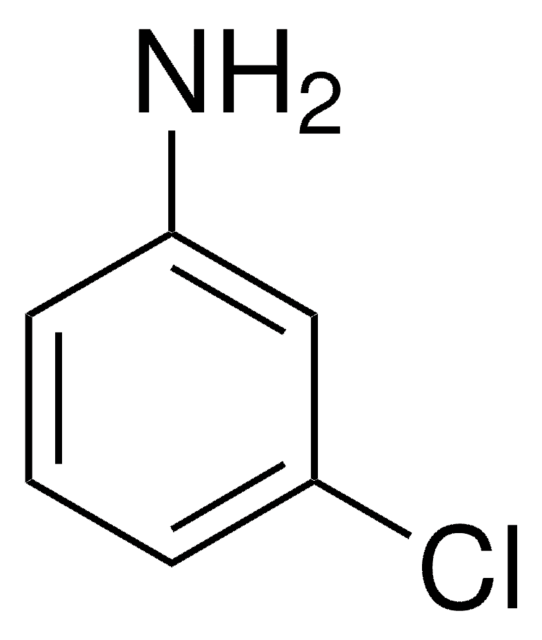437778
3,4-Dichloroaniline
98%
Synonym(s):
3,4-Dichlorobenzenamine, 3,4-Dichlorophenylamine, 4,5-Dichloroaniline, 4-Amino-1,2-dichlorobenzene, m,p-Dichloroaniline
About This Item
Recommended Products
Quality Level
assay
98%
bp
272 °C (lit.)
mp
69-71 °C (lit.)
SMILES string
Nc1ccc(Cl)c(Cl)c1
InChI
1S/C6H5Cl2N/c7-5-2-1-4(9)3-6(5)8/h1-3H,9H2
InChI key
SDYWXFYBZPNOFX-UHFFFAOYSA-N
Looking for similar products? Visit Product Comparison Guide
Related Categories
General description
Application
signalword
Danger
Hazard Classifications
Acute Tox. 3 Dermal - Acute Tox. 3 Inhalation - Acute Tox. 3 Oral - Aquatic Acute 1 - Aquatic Chronic 1 - Eye Dam. 1 - Skin Sens. 1
Storage Class
6.1A - Combustible acute toxic Cat. 1 and 2 / very toxic hazardous materials
wgk_germany
WGK 3
flash_point_f
275.0 °F - closed cup
flash_point_c
135.00 °C - closed cup
ppe
Eyeshields, Faceshields, Gloves, type P2 (EN 143) respirator cartridges
Choose from one of the most recent versions:
Already Own This Product?
Find documentation for the products that you have recently purchased in the Document Library.
Customers Also Viewed
Protocols
GC Analysis of Anilines on Equity®-5
Our team of scientists has experience in all areas of research including Life Science, Material Science, Chemical Synthesis, Chromatography, Analytical and many others.
Contact Technical Service




